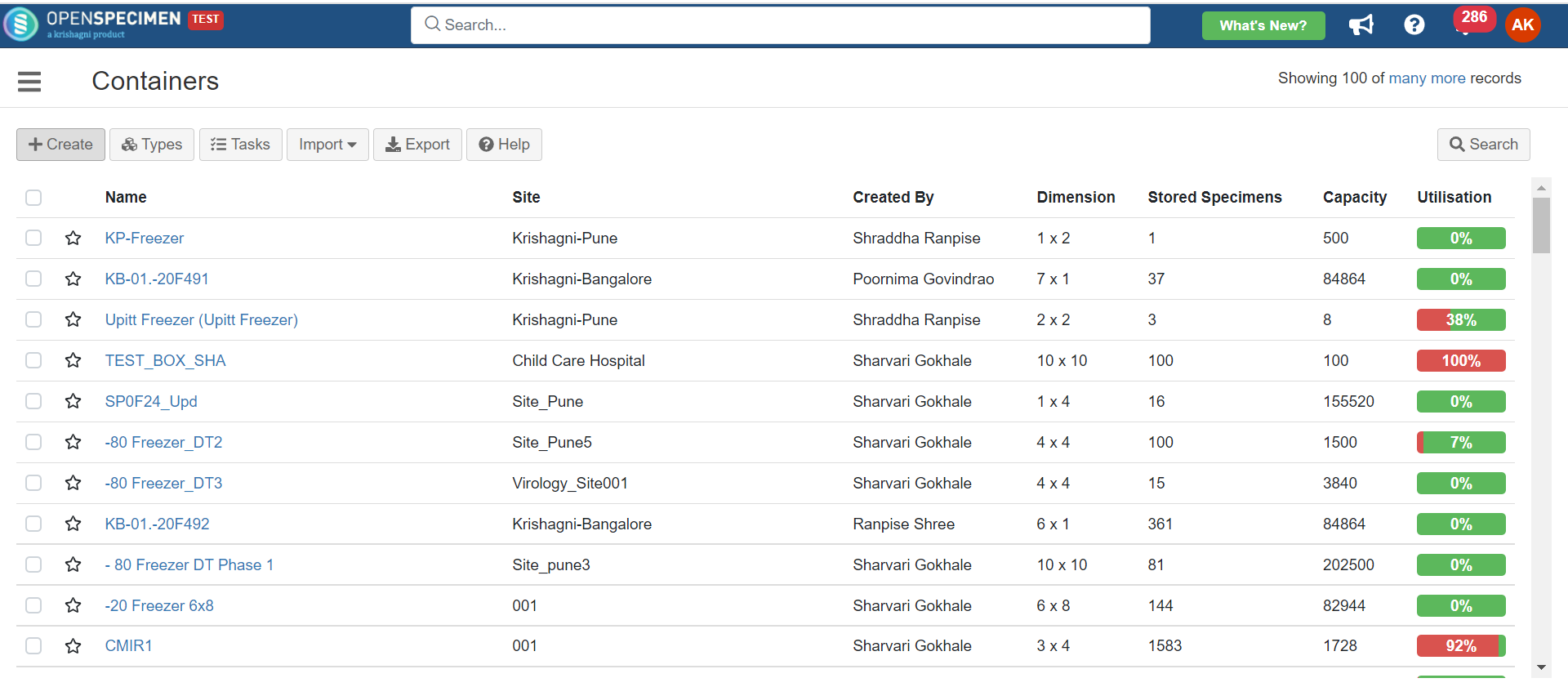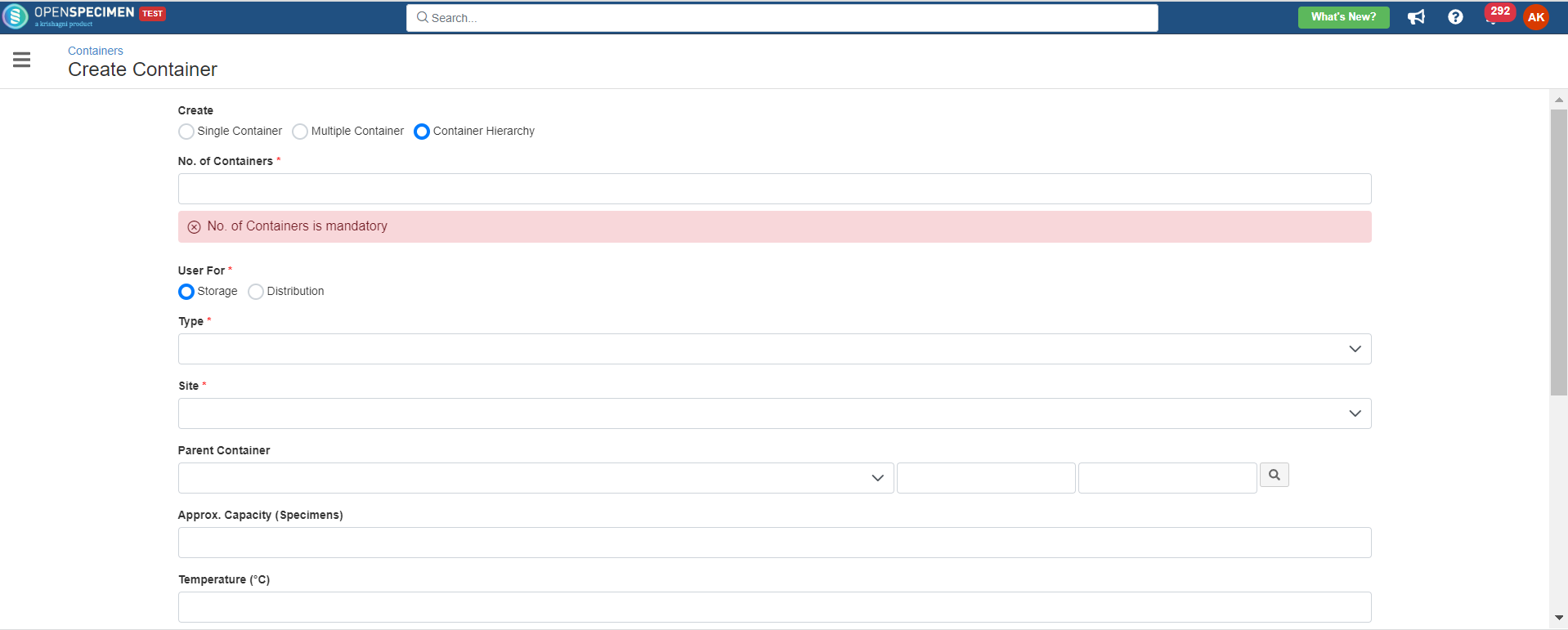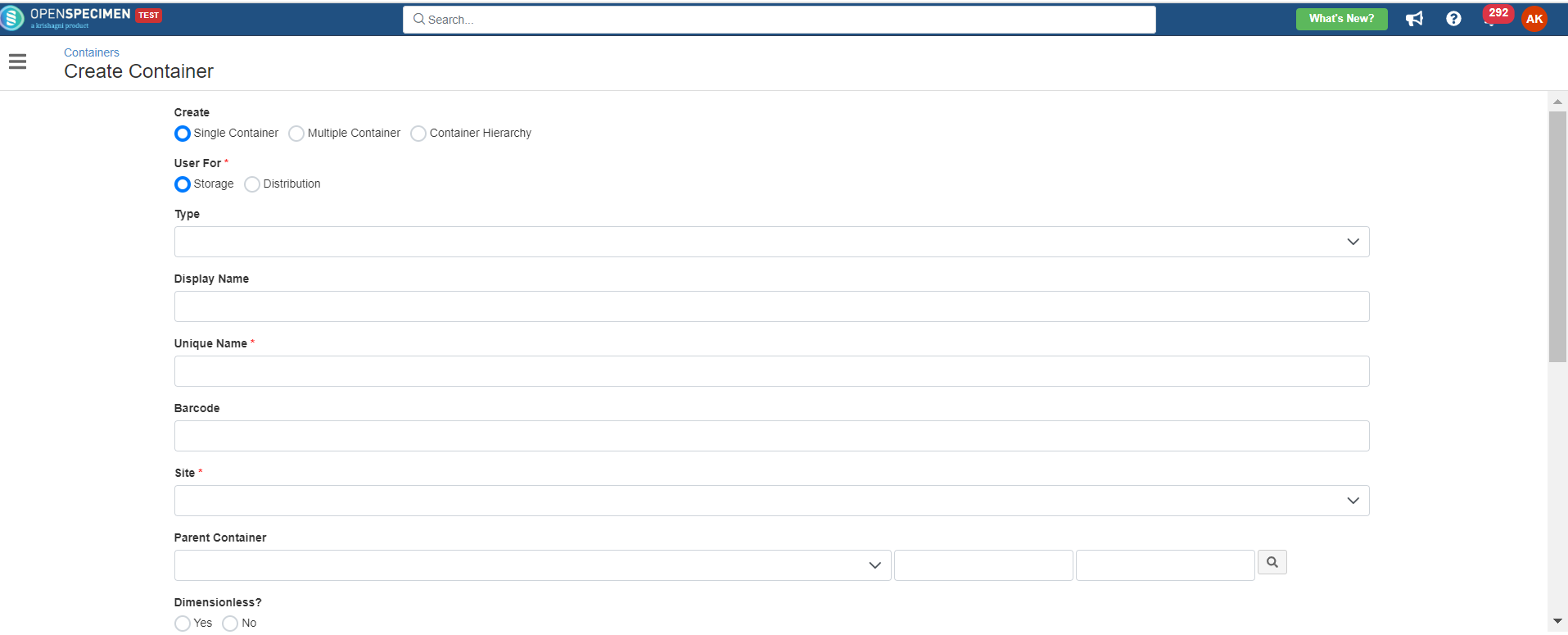- Click on 'Containers' from the homepage.
- Click on the 'Create' button.

3. Select the 'Container Hierarchy' option.  Image Removed Image Removed Image Removed Image Removed Image Added Image Added
4. Under the 'Type' field, select type of container you wish to create, for example, "-80 Freezer." 5. Enter mandatory details as mentioned below: | Expand |
|---|
| title | Expand to see more details... |
|---|
|
| Field Title | Mandatory | Description |
|---|
| No. of containers | Yes | This will create multiple containers of with same dimensions. | | Used for | YesSpecifies | Specifies whether the container created will be used as only storage container or a temporary storage container to store distributed samples | | Type | Yes | Type of container you wish to create for your repository. | | Parent Site | Yes | The site where the physical container exists. | | Parent Container | No | The parent container under which the container has to be created. | | Approximate Capacity | No | This is automatically calculated by default. The user can also manually specify in case the whole freezer is not created at once. Based on this the utilization presentation is shown. | | Temperature | No | The temperature of the container. | | Store Specimens | No | It depends on the type of container that directly holds the sample. e.g. a freezer or a rack does not store specimens, whereas a box stores specimens. | | Display in Map | No | Within the container map, the user can choose to display specimens stored by their PPID (participant protocol ID of the participant) or specimen label or Specimen barcode. | | Collection Protocol | No | To dedicate a container to specific collection protocol. This will allow you to restrict the container for a particular CP | | Specimen Types | No | To restrict the container to hold only specific types of samples. |
|
6. Click on the 'Create' button. 7. You will be able to see your container in the list. This will create the whole freezer with all racks and boxes with names auto-generated based on the format specified at the container type level.
| 

